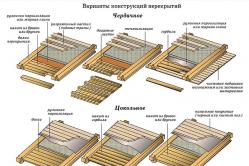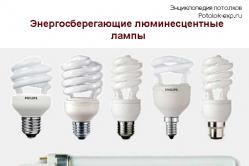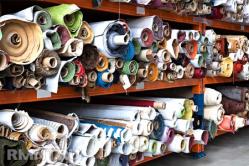Antipyretics for children are prescribed by a pediatrician. But there are situations of emergency care for fever, when the child needs to give the medicine immediately. Then the parents take responsibility and apply antipyretic drugs. What is allowed to give to infants? How can you bring down the temperature in older children? Which medications are the safest?
From the aggressive climate, country houses are able to protect a layer of decoration from the facade panels in the style direction "under the stony structure." The plastic texture of the panel realistically imitates a stone, and the price for it is much lower than for natural samples. Facade panels for stone provides for a composite or single-layer internal structure - this is a universal finish for country houses from bricks or wood . Such panels have become a successful alternative to stone for finishing the facade, due to the lack of complexity in the installation.
To order the installation service for facing panels, contact BM-Stroi. Masters will install the decorative material "under the stone" on the facade and, if necessary, will make an additional layer of thermal insulation. At a price, the modern look of facing "under the stone" (panel) for the house, will be 2-4 times cheaper to the owner than using natural stone rocks. The price for certain types of work on facing surfaces is in the section - price list. An accurate assessment is provided individually in the estimate after the evaluation of the scope of work.
Features of front panels
A good level of realism of stone texture is one of the main advantages of this finishing panel. Textured surface finish "stone" is drawn so that each stone segment of the coating is distinguished by individual geometric parameters and color design.
Due to the bevelled edges, the joints become inconspicuous, which makes the coating homogeneous. The façade panel creates a visual mirage that the house is decorated with natural stone , while the price for the coating is much lower than other types of cladding. In addition to decoration, the modern plastic "stone" has the following characteristic features:
The price of finishing the house under the stone
Imitating stone facade panels provide a simple installation and a rocky surface texture to choose from. Specific price the entire list of required services is determined after the departure of the master to the work site. The price will be higher when a high level of complexity of exterior design is planned.
Types of facade panels for stone
Siding facade panels "under the stone" are in demand, like facade cladding for country houses. Manufacturers provide a wide choice of external and technical parameters. Facade panels are made of high-tech plastic, resistant to outdoor conditions and deformation from mechanical influences. When facing facades, the masters apply the following types of panels with a stone design:
Stages of work execution
Compliance with the mounting technology will ensure a long service life of the paneling "under the texture of the stone." Accurate execution of the sequence of stages and availability of the necessary tools is the key to successful finishing works. Facade facing involves the passage of the following stages:
Photo of finishing the facade of the house with panels under the stone
The house, neatly lined with stone, is always a pleasure to see. In the photo-archive of our company there are various versions of stone imitation from the panels for the facades of houses. At us you will find the best photo-ideas of registration of facade panels of walls on style of a stony laying. To create an unusual image, it is possible to use the technology of the facade cladding - a panel under the stone with a double color. Also on the site you can get acquainted with
Nowadays, artificial finishing materials that imitate natural materials such as wood, stone, and brick are gaining increasing popularity. At one of the first places in the list of these materials are plastic panels for facing the facade.
They meet the highest requirements for external decoration, and allow you to quickly and cheaply give any building a magnificent view.
To plastic belong first of all products from polyvinyl chloride - wall and. It is the latter that will be discussed in this article.
But just want to clarify that the name "socle" is not entirely correct. Indeed, these panels are often used for facing the above-ground part of the foundations, as their thickness and strength are much higher than for conventional wall siding.
But their destination is not limited to this: such panels with a decorative surface for stone, brick, marble or wood - ideal.
Advantages of the material
Plastic facing panels for the facade of different manufacturers may differ in size and decor, but they all have the same advantages:
- Water resistant, thanks to which they reliably protect the load-bearing walls and insulation from the effects of atmospheric precipitation;
- Absolute non-compliance with corrosion and putrefaction. PVC does not support the reproduction of mold, fungus, not subject to damage from insect pests;
- Facade panels made of plastic do not burn out in the sun, as UV-resistant dye is injected directly into the feed mass, and not applied to the surface;
- Low price compared to those materials whose surface they mimic;
- Easier and quicker installation, especially when compared with the cladding of houses with brick, natural stone or clinker tiles;
For reference. Simplicity of installation is largely ensured by such ready-made elements as corners, profiles, racks, slats, etc.
- Resistance to frost, sharp temperature changes;
- Light weight, which allows you to trim not only new buildings, but old and even dilapidated buildings with a weak base. Including baths, garden houses, summer kitchens, etc .;
- A wide range of colors, textures and aesthetic appearance, which allows you to implement any architectural solutions, harmoniously combine the facades with the decoration of roofs and cornices, other elements of the exterior;
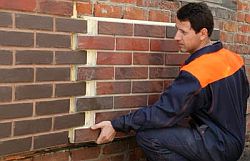
- No need for preparation and alignment of walls, the possibility of additional thermal insulation of buildings by installing a heater under plastic panels for facing houses;
- Possibility to make the installation at any temperature and at any time of the year.
Those or other advantages of the above are also inherent in other facade materials, but only the socle siding has all of them in full.
Although he also has a disadvantage, unusual stone and brick - this ability to melt at high temperatures. Therefore, it is not used for finishing large commercial pavilions, industrial buildings, gas stations, other fire-hazardous facilities.
Mounting technology
Plastic facing panels for facades are an external decorative element of hinged ventilated systems. Such systems are characterized by the presence of a ventilated gap between the wall and the outer finish, designed for the removal of water vapor and condensate, which significantly extends the life of both the building itself and the cladding.
Another mandatory element of such a system is the frame or lath, to which the panels are attached. Also, the system can include heat and sound insulation materials that are mounted under the hull.
Mounting of carcass and insulation
Let's start with the fact that no preliminary preparation of the walls, except for the elimination of obvious defects affecting the thermal insulation, is not required. It is necessary to seal up the obvious cracks, scrape mold with the treatment of the infected area with an antiseptic - that's all.
Then you can start preparing the frame and warming.
The installation instructions for the subsystem are as follows:
- First, it is necessary to make a vertical marking, along which, with a step of 50 cm, fix with dowels direct suspensions used for the installation of drywall. The first and last lines of marking are performed with an indentation of 10 cm from the corners of the facade, between the axes of the intermediate lines should be 30-35 cm.
Vertical frame guides during installation are connected horizontally at the very bottom and top; - Suspensions are bent by the letter P, a metal profile or a wooden bar is inserted between their legs, which is aligned vertically and fastened to the suspensions;

Note. For the carcass structure, it is better to use more durable metal profiles. Put wooden crate makes sense in the case when the walls of the house are also made of wood.
- First, the outer guides of the frame are set in the level. Then a line is stretched between them on top, at the bottom and in the middle, and intermediate profiles are already shown along it.
Thus, all facets of the crate will lie in the same plane. If you make a mistake at this stage, it will be difficult for you to mount the plastic panels so that they fit snugly against each other and to the frame, and the appearance of the finish will suffer; - If you want to insulate the building, first fix the heater, and only then proceed to mount the frame. To do this, polystyrene or any mineral heat-insulating material should be planted on the whiskers of the hangers, piercing them with a heater through and through.
In this case, it is necessary to make sure that there are no cracks between the individual heat insulation plates, and they fit tightly together;
Council. It is most convenient to work with polystyrene or polyurethane - these materials also serve as soundproofing. You can do otherwise: treat the facades with liquid polyurethane foam, which after hardening forms a continuous, seamless surface.

- Sheet or roll insulation must be additionally fixed with plastic dowels-umbrellas, after which a windbreaker is laid on top of it - a special two-layer vapor-permeable film protecting the heater from getting wet and weathering.

This preparatory work can be considered complete. The thickness of the profile protruding above the heater will be sufficient to form a free space for air circulation under the lining.
Mounting of the cladding
Facing the facade of the house with plastic panels begins with the installation of corner elements and the starting profile along the lower level of the finish.

Then begins the direct installation of wall panels, which are conducted in rows from the bottom up.
How this is done you will be told the video in this article and the following memo:
- The first panel cuts the vertical protrusions vertically, after which it snaps into the starting profile and is inserted into the groove of the corner element. In its upper part there is a bar with mounting holes, through which it is fixed with screws to the frame;
- The second panel is also first installed before clicking into the starting bar, then moves towards the first installed panel until they are firmly connected to each other;
- The second row of panels with the bottom edge is installed in the mounting groove of the first row and is also fixed to the vertical frames of the frame;
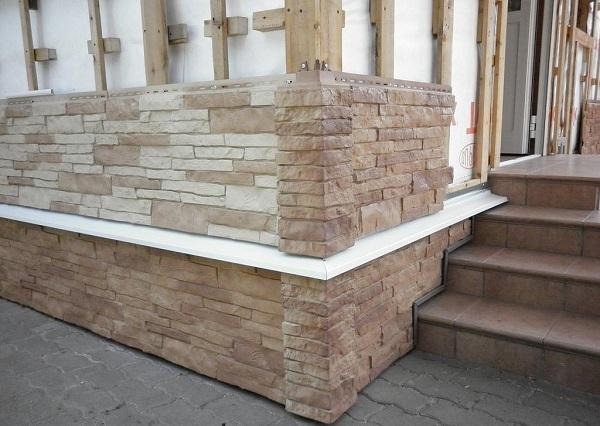
- If the last (top) row of panels does not fit under the visor, they are cut to the desired height, and the fastening is made through oval holes, which you need to make with your own hands in the decorative seam between the bricks. At the end of the installation, the attachment points are painted in the color of the seams.
It is important! Oval holes are made in the panels for a reason. Plastic has the ability to expand and narrow with changing temperature, and this form avoids deformation of panels that can move freely within specified limits without violating fasteners.

Conclusion
As you can see, the facade cladding with plastic panels is not the most difficult, not even professional. But this is not the main reason why they have become so popular with owners of holiday homes and country houses.
A great role here was played by the low cost of decoration, its practicality, durability and presentable appearance.
The building, built of red brick, or made of wood looks quite dignified in itself. But a concrete house or made of silicate brick does not make a good impression. The facade is needed here, at least for aesthetic reasons.
Facade panels under the stone - a universal way to solve this problem. Wrap the material like a new building, if its walls look ugly, and old, but strong. In addition to excellent decorative qualities, the facing panels protect the walls from rain, snow and wind and even insulate. The installation of the skin is simple and often done by hand.
Varieties of material
By facade means facing panels intended for outdoor work. Use them for interior finishing is not prohibited: the difference is in the strength of the product and weight. They produce sheets of various materials.
- Metal - made of galvanized iron and aluminum. Facade facing panels made of metal for stone are characterized by high strength, fire safety and a long period of use - up to 30 years. The surface of the material is formed in such a way as to simulate the texture of a stone or brick, and the color provides a polymer coating resistant to ultraviolet radiation. Buy this option is especially recommended when the impact resistance of the finish is important - the steel sheet is difficult to damage.
- Wood-fiber - the production of wooden facade panels under the stone is based on the pressing of wood fibers with a binder. The material is very light, durable and frost-resistant. It is inferior to the metal in terms of fire safety, but it is significantly superior in terms of thermal insulation properties.
- Fibrocement - a material based on cement and fibers. Not combustible and absolutely resistant to moisture. Fibrocement is durable, long-lasting, but difficult to process and has a high weight. Mounting it with your own hands is difficult.
But, despite the numerous advantages of the above options, facing facade panels under a stone made of plastic are the most popular.
Finishing material based on polymers
The production of decorative facade panels for stone is based on injection molding technology. To give the product a resemblance to a stone or a brick, the raw material is poured into a suitable mold. The latter is made as a cast from the surface of the stone and exactly repeats the features of the texture.
There are two types of cladding, each of which has its advantages and disadvantages, as well as the scope of application:
- Plastic sheathing;
- Polymer thermopanels.
Plastic sheathing
Vinyl facade panels, simulating a stone, are made of polyvinyl chloride with various modifiers, increasing the overall strength of the product and resistance to fire. Production does not always include this stage, so it is recommended to buy material with the appropriate marking: self-extinguishing PVC.
PVC-plates have rather low heat-insulating properties. Usually the installation of the cladding with your own hands implies the insulation of the building with the help of any additional insulating materials.
Plastic facing sheets are light, the installation of the skin is very simple, and due to their small weight they are used for finishing any building: from a reinforced concrete building to an easy wooden house. Plastic blocks can be fixed to the crate, or you can simply stick it if the surface of the walls is fairly flat. PVC panels are not afraid of water, are not prone to putrefaction or mold damage. They do not like rodents either.
Facade or wall PVC panels under the stone do not lose their properties under the influence of temperatures from -50 ° С to + 55 ° С. But, the truth, it concerns only the qualitative material, the price of which will not be very low. However, the material is not characterized by high impact resistance: plastic blocks are fairly easy to damage with direct impact, especially with a sharp end.
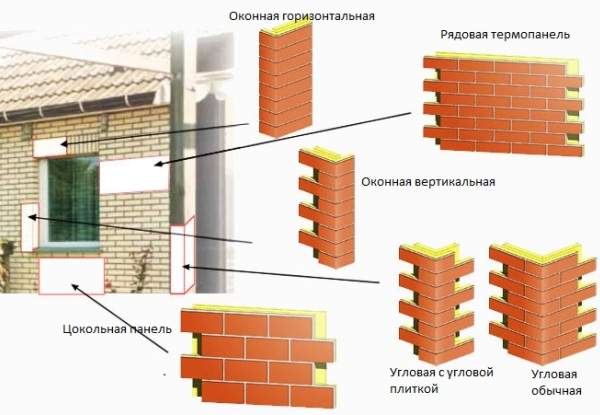
Additional attractiveness is made by plastic additional elements: corner, okolokonnye and connecting bars. The price is quite affordable, and the look is so decorative that sometimes they are used independently, for edging the corners on the plastered facade. In the photo you can see this option.
Polymer thermopanels
This is an improved version of the plating based on polymers. The material is multilayered, its production involves the creation of a layer of foamed polyurethane. The polymer has the highest thermal insulation properties. Facade thermal panels under the stone judging by the reviews serve as an excellent insulation. To buy them is worth it so as not to waste time on thermal insulation. The installation technique is simple: the blocks, like finishing panels, are connected with each other by locks and fixed.
There are several types of material:
- Metal facing thermopanels - consist of a face layer of aluminum or galvanized iron and an inner layer of polyurethane foam. The thickness of the latter ranges from 4 to 10 cm. Decorative quality provides a PVC coating. The price of the product depends on the material of the top layer.
- Wood-fiber - the upper layer protrudes pressed wood fibers. As a rule, blocks mimic a tree, but there are variants that repeat the masonry.
- Composite facade panels under the stone - the thickness of the layer of polyurethane foam varies from 4 to 8 cm. The outer layer is made of artificial stone - porcelain stoneware, ceramics or clinker. This is the most durable and most effective heat insulation material for today. Composite slabs are completely non-flammable, have absolute resistance to moisture and temperature limits. The minimum service life is 50 years. The price of the product is appropriate. But the user reviews are unambiguous: the facade of composite boards does not require either warming or amplification. Its only drawback is not such a simple installation, as in the previous case: the thermopanel has a decent weight.
- Isosiding - is a wall plate made of reinforced polystyrene foam with an acrylic coating 2.5-3 mm thick. The price is the most accessible, the installation of such facade panels under the stone is easy to implement with their own hands. The service life is less - within 10 years. Buy it is recommended for housing in regions with a temperate climate. This is also evidenced by the reviews in numerous forums.
- Heat-siding is a variant of composite sheets. Styrofoam plates are applied with marble chips. The product has strength and moisture resistance of marble, thermal insulation properties of foamed polymer and resistance to any kind of corrosion. The weight of the slabs is small, so that self-assembly is quite possible.
The superiority of composite materials is that they combine qualities incompatible in one material. Walled facade thermopanels under the stone - a perfect example of this.
Decorative solutions of facade panels under the stone
The common disadvantage of any stone cladding is its weight. A ceramic granite block, for example, weighs about 30 kg, granite of the same dimensions - not less than 55 kg. For walls and the foundation of a building, such a load can be prohibitive. Solve the problem you can if you buy facade panels imitating a stone - the mass of finishing even the heaviest is still less.
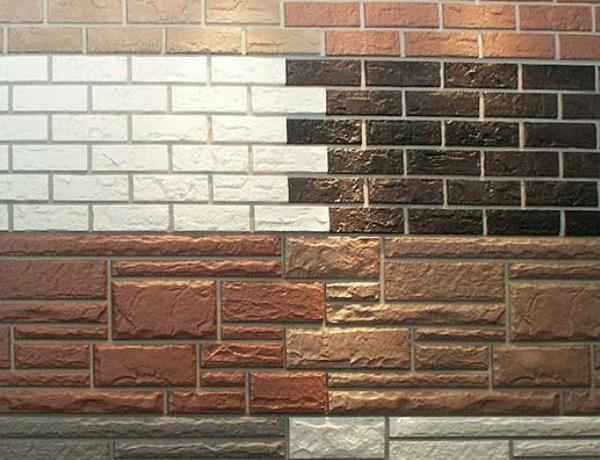
PVC panels, metal, composite facade panels imitating a stone on a photo can not be distinguished completely from facing by a natural stone. This is quite the right impression: in reality, the difference is difficult to notice, even coming close. Finishing exactly repeats both color, and texture, and processing methods.
By the surface type, the facing plates mimic the following materials:
- The rock is a coarse relief texture, obtained when large fragments are chipped. The height difference in this case is about 5-10 cm. Such a stone is laid without facing a certain order, just combining elements of different sizes. Decorative plates also mimic this feature.
- Spot - assumes a flat surface with chips. Reception is typical for the palace stone, which fits in a certain order. Buy this option is offered when plating buildings in a classic style.
- The sawn stone is an uneven surface with characteristic longitudinal grooves. The option is perfect for plating the plinth.
- Heat treatment - gives the stone an old look: with chips and peeling, the pattern on the surface is well manifested. One of the cladding samples can be seen on the photo.
- Sanded stone - imitates a smooth rough surface with traces of processing. The material does not have a pronounced structure, it is offered in two colors to decorate the walls and corners with contrasting shades.
- The polished - smooth, but matte surface, characteristic for the finishing stone.
- Polished stone - the plates duplicate the smooth mirror surface of the polished artificial stone. Facing looks very impressive
The price of facade panels under the stone from imitation does not depend. Here the thickness of the insulation layer and the polymer base - PVC or PPU are more important.
Finishing panels for stone - a practical and in all respects a good solution. The list of their merits is almost unlimited, and decorativeness is not inferior to those natural materials that they duplicate. Of course, some types of finishes are more durable, others are more durable and reliable, others are affordable. But with such a huge assortment you can always find a version of the cladding that completely satisfies all conditions.
The facades of houses, finished with natural stone, attract a lot of people. This design looks beautiful and fits well in any landscape. But this finish is not available to everyone, because the very natural stone and work with it are very expensive.
But this is not the only obstacle to using stone materials for finishing the house. Often the house, which has been in operation for a long time, is simply not designed for additional loads. Stone - the material is heavy, and the load on the foundation of the house in case of facing the facades will increase significantly. Therefore, each design of this cladding requires verification of the bearing capacity of the foundation and, possibly, its reinforcement.
What do those who still want to decorate their home, turning it into a kind of a small ancient castle? They are helped by modern facing materials in the form of facade panels, stylized as a stone.
Facade panels "under the stone"
There are many options for such panels.
They are made of different materials:
- wood-shaving panels;
- cement-shaving;
- plastic panels;
- products from fiberglass.
The most often now use plastic products, which have good performance and quite affordable price.
These panels are available both for the plating of the walls of the house, and for plating the plinth.
 The plinth is constantly in heavy operating conditions, as it is exposed to dampness, cold and other unfavorable natural factors. Therefore, he especially needs good protection. In connection with increased operational loads, the plinth panels have a thickness 2-3 times higher than the same parameter of the wall panels. This allows them to perceive great mechanical effects without destruction.
The plinth is constantly in heavy operating conditions, as it is exposed to dampness, cold and other unfavorable natural factors. Therefore, he especially needs good protection. In connection with increased operational loads, the plinth panels have a thickness 2-3 times higher than the same parameter of the wall panels. This allows them to perceive great mechanical effects without destruction.
The plinth panels differ from similar products for walls with a larger pattern of natural stone, have a coarser texture. Most often they have a rich color and increased size.
All facade plastic panels are divided into 2 types:
- Single-layer, made of PVC.
- Combined panels. These are products with enhanced functionality. They consist of two layers: a face layer made of polymer material and an inner layer of expanded polystyrene.
The second perform not only the function of protecting the facade from adverse effects, but also replace the insulation.
Therefore, if the building needs to be insulated, then it is worth considering the purchase of combined panels - then you will not have to deal with the facade insulation separately.
In addition to the ease, which does not create a load on the foundation of the building, plastic panels have other advantages.
Advantages of plastic panels "under the stone":
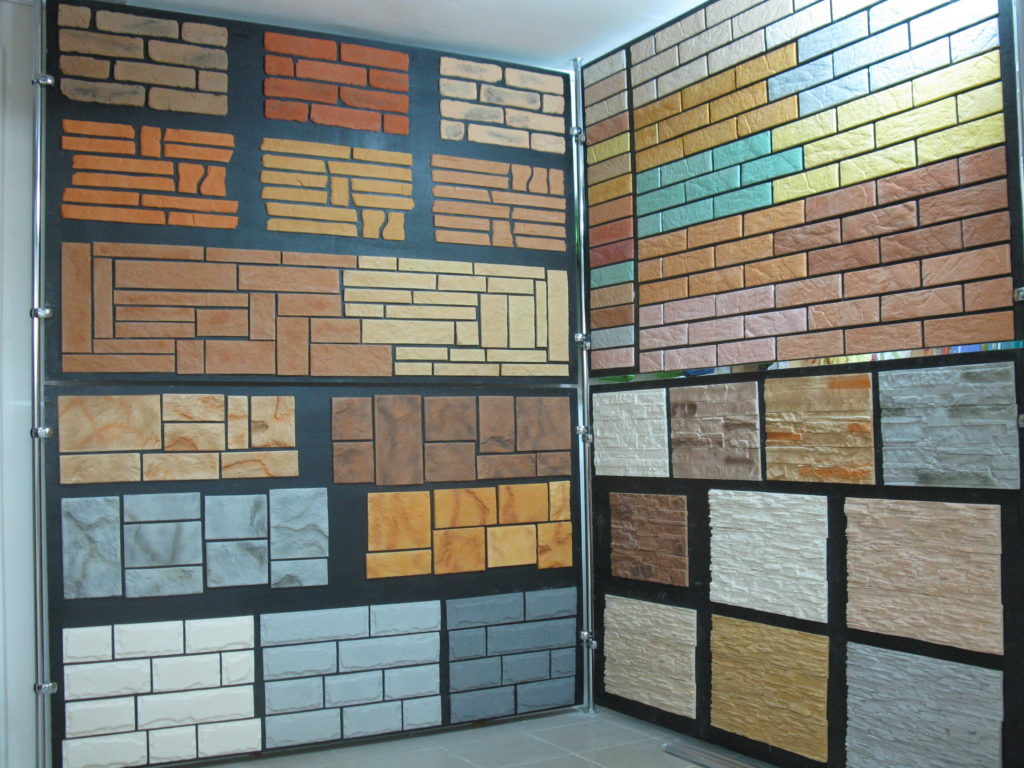
- The material is quite resistant to mechanical stresses, which often arise when operating a house. Particularly stable basement panels.
- The appearance of the building after the cladding is radically improved. Such a finish can be used even for the oldest facades and houses.
- The wide possibilities of design of facades, thanks to the presence on the construction market of products of various manufacturers. The only limitation: if it is decided to trim both the walls and the base, it is better to purchase panels of the same manufacturer - this will avoid annoying inconsistencies in the panels and facilitate their installation.
- After the facade is clad, he will not need any special care. It's enough just to wash it.
- The installation of the cladding requires only the exact implementation of the technology work. If this condition is met, it is not difficult even for self-fulfillment.
- The panels are so light that no special equipment or attachments will be required to work on the facade.
- The cost of the panels depends on their quality and the manufacturer, but basically it is quite affordable.
The disadvantages include the following features:
- The color palette of panels is wide enough, but when their color has to be selected in accordance with the design of other elements of the facade, difficulties may arise. Although you can always order the manufacturer a certain color, which will cost a little more.
- Plastic panels do not adequately withstand the effects of fire - they begin to melt, which leads to the destruction of the material. Therefore, it is not necessary to build a fire near the house lined with them.
The order of the installation and the necessary tools
 For self-fulfillment, you need to have a set of tools and adaptations.
For self-fulfillment, you need to have a set of tools and adaptations.
Such tools include:
- roulette;
- water level;
- a hacksaw with small teeth;
- a hammer;
- drill;
- screwdriver;
- circular Saw;
- self-tapping screws with a countersunk hat of 30 mm length.
The surface of the walls to be removed, from whatever material they were made, must be prepared: they must be clean (without crumbling trim and dirt) and even. If the building is plastered, it is necessary to remove the exfoliated coating, to level the walls, to repair the cracks. If the facade is wooden, then it is necessary to treat it before the beginning of the work with means against mold, rot and insects. Also it is necessary to carry out treatment with a composition that increases the fire resistance of wood.
If it is decided to use conventional plastic panels, and the house needs to be insulated, then first you need to perform preliminary work.

- The wall needs to be protected with a layer of vapor barrier film.
- Next, the crate is mounted. It can be both wooden (bars impregnate with antiseptic), and metal (special galvanized profile is used).
- Sheets of insulation are cut in accordance with the dimensions of the cells of the crate and tightly fix it in the resulting cells.
- Next, it is necessary to fix the windproof membrane closely to the heater.
- The next stage is the installation of a counter-grill, to which the plastic facing panels will be fastened.
If the panels are equipped with a heat-insulation layer made of expanded polystyrene, there is no need to mount a heater.
Before laying the first row of cladding panels, it is necessary to repel the horizontal line along the entire perimeter of the building with the help of a water level.
It is on it will be attached all the starting bars. In the corners of the house, too, you need to fix the special laths necessary for mounting the corner elements.
The installation of the cladding panels is as follows:
- The first panel is attached to the starting bar in the lower left corner.
- Each new panel is attached from left to right, and rows are formed from the bottom up.
- The first panel is fixed with screws, and the second panel is attached by snapping a vertical lock with it.
- Fastening panels produce self-tapping screws, which are screwed into special holes in the panels. Between the self-tapping screw and the panel, a gap of approximately 1 mm is left to compensate for the expansion of the material when the temperature changes. This prevents the plastic from cracking.
- If the last panel of the row does not fit in length, it must be cut with a bulgarian and thus adjusted to the length of the facade.
Angular starting bars and elements of each manufacturer.
The plastic corners of the corners are fastened to the planks with self-tapping screws. The depth of the panel entry into the corner is not less than 50 mm. The corner element itself should cover the outer walls by 15-20 mm on each side.
When a combination of panels of different types, their joints are formed using a J-profile.
This gives the finish a finished look.
What else do you need to know
It should be noted that the panels "under the stone" have a repeating pattern. For this reason, in order to give the facade a natural appearance, the panel in each row is recommended to be displaced, giving the masonry a natural appearance. Although you can find information that panels can be mounted at any time of the year, do not do this at a temperature below -5 degrees.
Photogallery of wall and basement panels "under stone"

